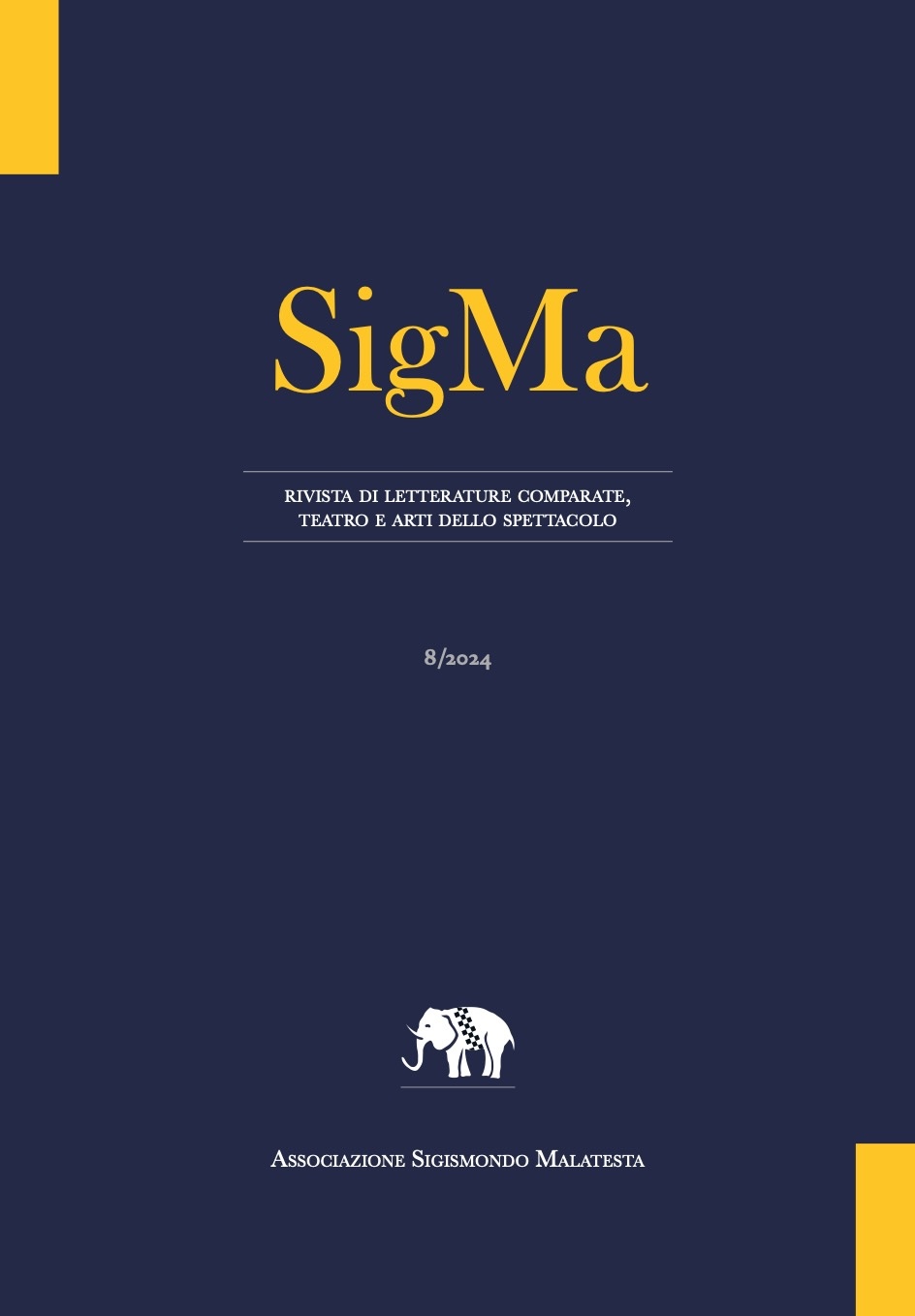Declinazioni della coralità nell’opera di Samuel Beckett
Abstract
Il saggio ricompone le oscillazioni attraverso cui la coralità – intesa secondo l’accezione mutuata da Jean-Pierre Sarrazac – si esercita nell’opera di Samuel Beckett, segnatamente in Play (Commedia), Come and Go (Va e vieni) e Quad. In Play le voci di W1, W2 e M procedono per assoli alternati eccetto che per i chorus, nei quali la polifonia diretta dallo spotlight acquista il proprio carattere di simultaneità. Flo, Vi e Ru in Come and Go intessono la propria partitura scenico-vocale nella ritualità di un trio disseminato, destinato a frangersi e a ricomporsi. Dalle traiettorie combinatorie di Quad emerge, infine, una coralità muta espressa da formule coreografiche che si accompagnano a sonorità musicali percussive.
Downloads

This work is licensed under a Creative Commons Attribution 4.0 International License.
SigMa pubblica in internet, ad accesso aperto, con licenza:
|
|
CCPL Creative Commons Attribuzione |
L'autore conserva il copyright sul suo contributo, consentendo tuttavia a chiunque "di riprodurre, distribuire, comunicare al pubblico, esporre in pubblico, rappresentare, eseguire e recitare l'opera", purché siano correttamente citati l'autore e il titolo della rivista. L’autore, al momento della proposta di pubblicazione, è inoltre tenuto a dichiarare che il contenuto e l’organizzazione dell’opera è originale e non compromette in alcun modo i diritti di terzi, né gli obblighi connessi alla salvaguardia di diritti morali ed economici di altri autori o di altri aventi diritto, sia per testi, immagini, foto, tabelle, sia per altre parti di cui il contributo può essere composto. L’autore dichiara altresì di essere a conoscenza delle sanzioni previste dal codice penale e dalle leggi speciali per l’ipotesi di falsità in atti ed uso di atti falsi, e che pertanto Reti Medievali è esente da qualsiasi responsabilità di qualsivoglia natura, civile, amministrativa o penale, e sarà dall'autore tenuta indenne da qualsiasi richiesta o rivendicazione da parte di terzi.

